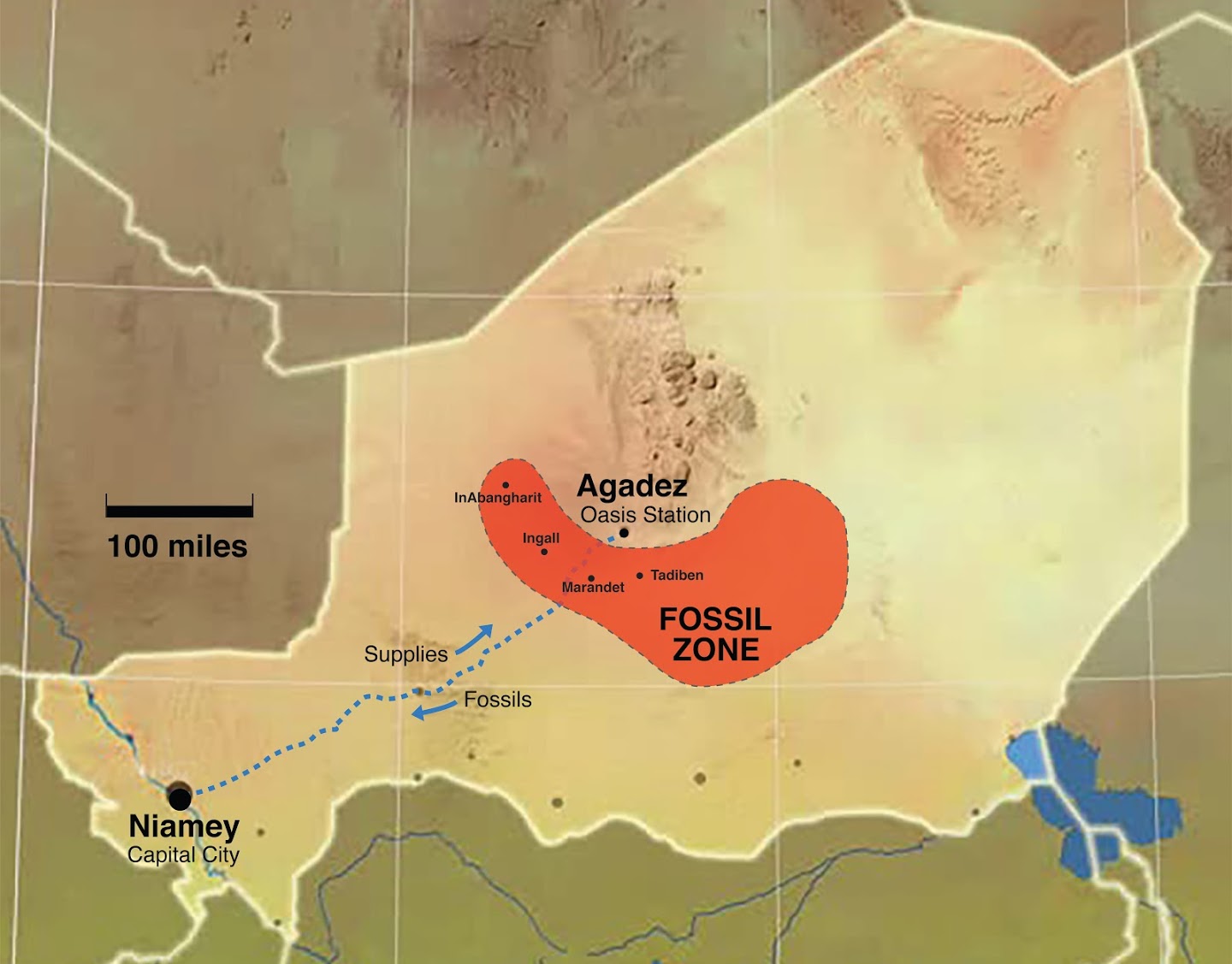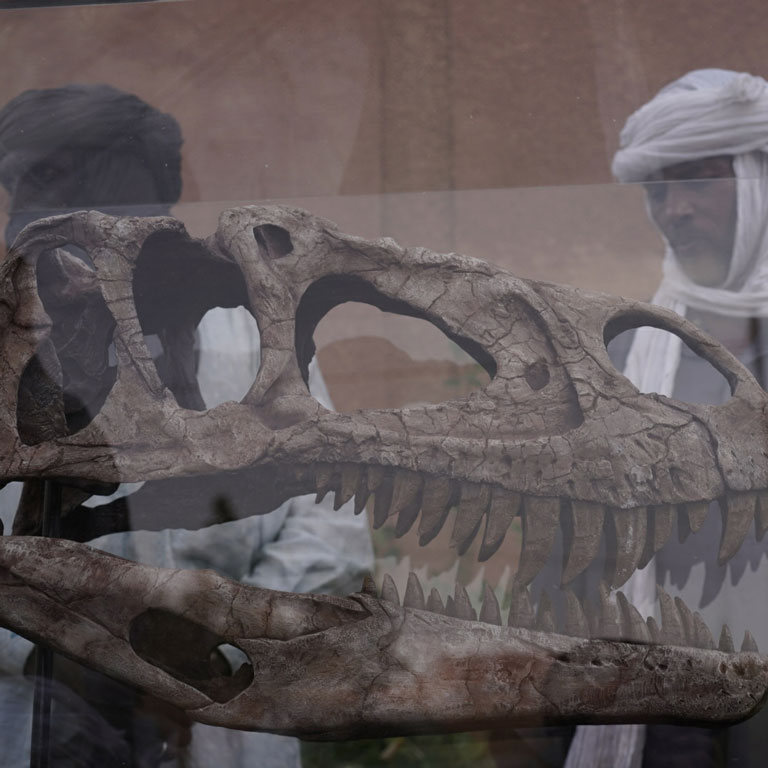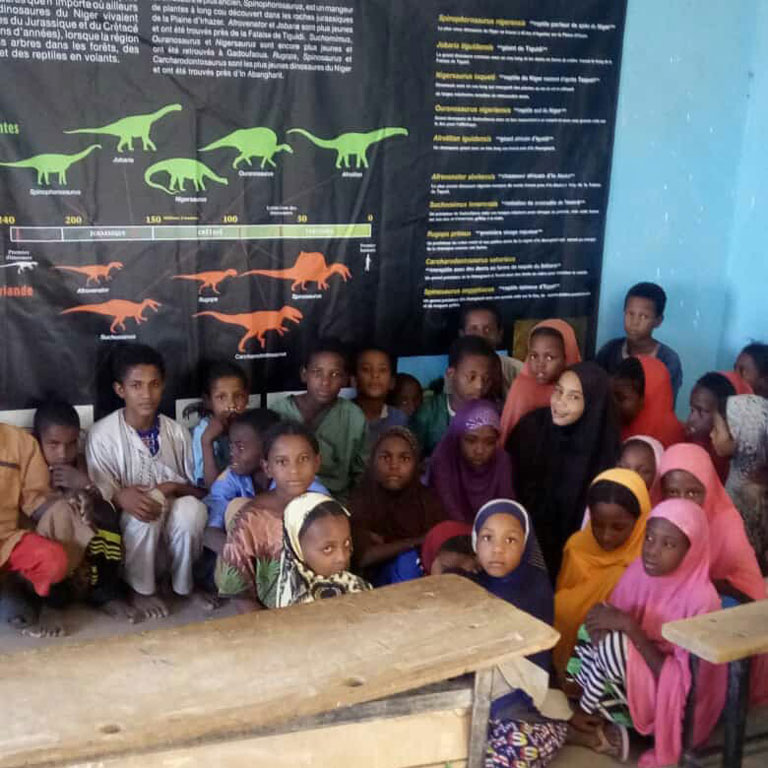Local Museums
The Falaise de Teguidit is a cliffline separating Sahalian grasslands to the south form the drier Acacia-pocked Irhazer Plain to the north.
With water near the surface near the cliff, oasis communities have located along the desert ridge.
At its foot are low-lying red- and green-colored outcrops of the Tiouraren Formation of Jurassic age, such as the plant-eater Jobaria and predator Afrovenator.
The cliff is composed of a coarse, hard sandstone, in which are embedded huge petrified trunks of the gymnosperm tree Araucaria. Agadez, situated some 50 and 100 kms northeast of the Falaise de Teguidit, is a tourist and visitation hub and a short drive away for those interested in wandering among the rocks that preserve Africa’s Jurassic world.
InGall, the largest oasis town south of Agadez with a population of 500 to 1,000 people, has a date palm grove, school, and grasslands nearby for camel and goat forage.
Community members serve as local guides for visitors, and in 2017 a three room museum was completed.
A short distance from the oasis lies the butte of Tiouraren, where skeletons pertaining to the sauropod Jobaria were recovered and where the description of the Tiouraren Formation was established.
Tadiben, a small mobile encampment of perhaps 50 people, is perched atop the Falaise de Tiguidit.
A small three-room museum was completed in 2018 for tourist visitation.
Massive petrified logs of Araucaria are preserved near the museum.
Marandet, a small village of about 700 people, is located near outcrops of the A school classroom has been re-roofed and enhanced with murals and fossils for the children of this classic oasis situated along well traveled routes to and from Agadez.
The dinosaurs Jobaria and Afrovenator were found at sites not far from Marandet.
The Falaise de Teguidit is a cliffline separating Sahalian grasslands to the south form the drier Acacia-pocked Irhazer Plain to the north.
With water near the surface near the cliff, oasis communities have located along the desert ridge.
At its foot are low-lying red- and green-colored outcrops of the Tiouraren Formation of Jurassic age, such as the plant-eater Jobaria and predator Afrovenator.
The cliff is composed of a coarse, hard sandstone, in which are embedded huge petrified trunks of the gymnosperm tree Araucaria. Agadez, situated some 50 and 100 kms northeast of the Falaise de Teguidit, is a tourist and visitation hub and a short drive away for those interested in wandering among the rocks that preserve Africa’s Jurassic world.
InGall, the largest oasis town south of Agadez with a population of 500 to 1,000 people, has a date palm grove, school, and grasslands nearby for camel and goat forage.
Community members serve as local guides for visitors, and in 2017 a three room museum was completed.
A short distance from the oasis lies the butte of Tiouraren, where skeletons pertaining to the sauropod Jobaria were recovered and where the description of the Tiouraren Formation was established.
Tadiben, a small mobile encampment of perhaps 50 people, is perched atop the Falaise de Tiguidit.
A small three-room museum was completed in 2018 for tourist visitation.
Massive petrified logs of Araucaria are preserved near the museum.
Marandet, a small village of about 700 people, is located near outcrops of the A school classroom has been re-roofed and enhanced with murals and fossils for the children of this classic oasis situated along well traveled routes to and from Agadez.
The dinosaurs Jobaria and Afrovenator were found at sites not far from Marandet.
 Local sites in Niger
Local sites in Niger
 Front view of Afrovenator display
Front view of Afrovenator display
 Side view of Afrovenator display
Side view of Afrovenator display
 Educational mural at Marandet school
Educational mural at Marandet school